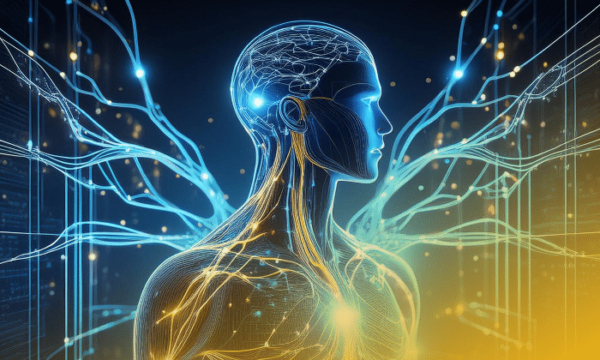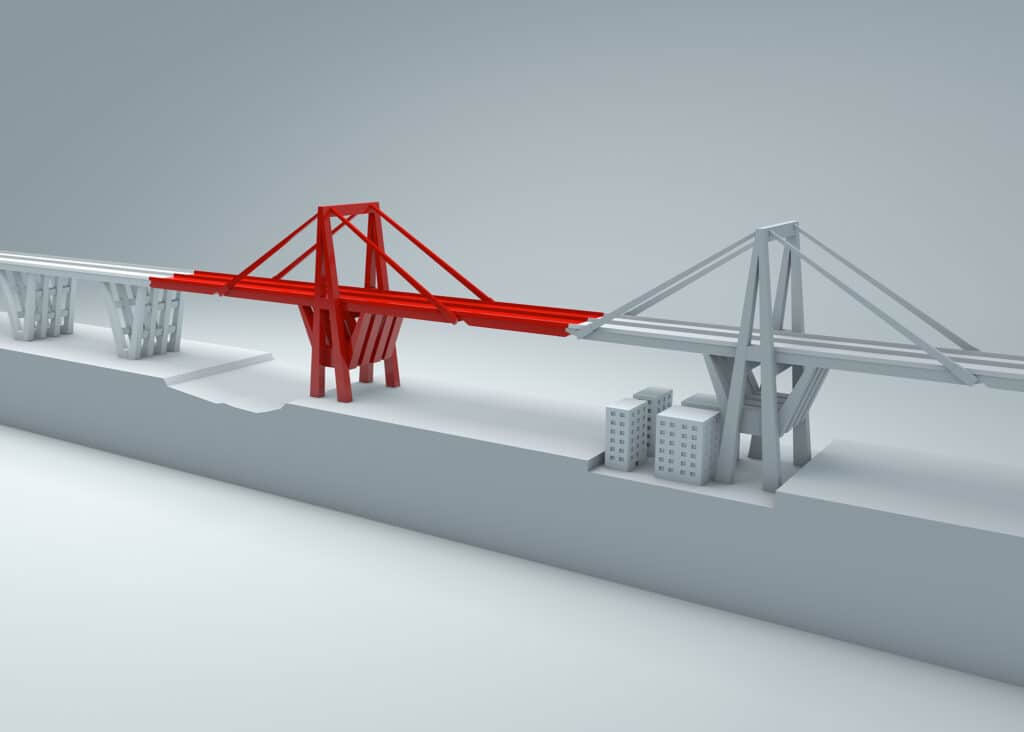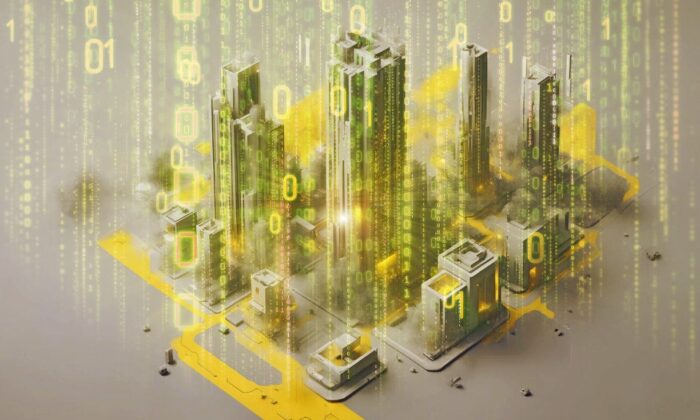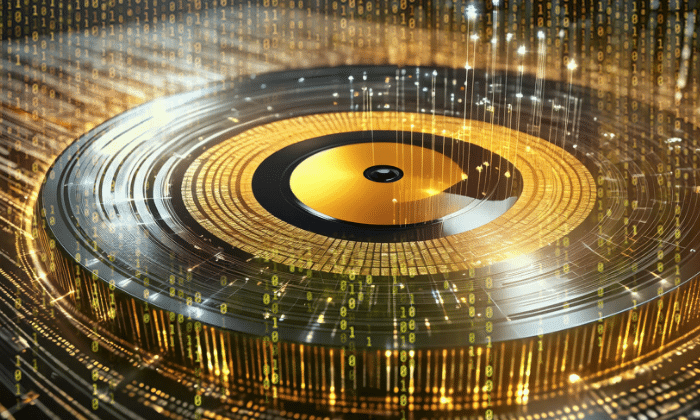Key Takeaways
- ASPI transformed the Genoa Bridge infrastructure by integrating real-time analytics, automation, and AI-driven decision-making for safer and more efficient operations.
- Their system mimics a human nervous system, using real-time sensor data and historical insights to drive both automated and human decision-making.
- This approach reflects Kahneman’s "Thinking, Fast and Slow," dividing decision-making into automated System 1 (instant responses) and analytical System 2 (complex, strategic insights).
- AI-powered real-time event monitoring enables predictive traffic management, congestion prevention, and accident response through instant enterprise replay.
- GenAI-driven conversational interfaces could enhance human exploration of data, allowing operational staff to make critical decisions with instant, natural language queries.
In 2018, chilling images from the Genoa Morandi Bridge flooded the internet. The bridge collapsed during a violent storm.
The tragedy created a mandate for fresh thinking. Autostade per l’Italia (ASPI), responsible for about 50% of the Italian roadway system (including the Genoa bridge), cleaned house. Non-tech-savvy executives were fired. They redesigned the bridge from scratch.
Instead of using technology as a bolt-on, they baked it in, reimagining a new infrastructure with autonomic decision-making and continuous awareness at its core.
Their digital transformation flipped traditional technology thinking on its head. Batch processes replaced by real-time, manual analytics replaced by AI-augmented analytics, and a new method emerged to separate human decision-making from robotic decision-making.
The resulting system delivers safer transportation, increased transparency, and cost savings across inspections, maintenance, and accident management.
The enterprise nervous system
The new system resembles the human nervous system, with sensory input like our eyes, ears, and nerve endings streaming from embedded sensors built into the infrastructure.
The system makes automated decisions where appropriate. It uses historical data to predict how best to ensure safe, secure, and efficient travel using real-time feeds of weather forecasts, traffic conditions, and accidents.
A “nervous system” vision of enterprise technology is a fresh way of designing software systems, setting the stage for new ways of using data, making decisions, and applying AI to decision-making.
Here are five elements of ASPI’s approach to the Genoa Bridge you can use to create your own enterprise nervous system:
1. Build on hybrid system of real-time and historical data
Data forms the foundation of every modern business. ASPI set out to make their data as real-time as possible.
While traditional data management is batch-oriented, they presumed all data would be real-time, streaming, and continuously up to date. This allowed APSI’s analysts to analyze continuously fresh data instead of relying on stale data, approximations, and guesses. Sensors, GPS, video, toll collection systems, and law enforcement feeds provide real-time feedback about traffic flow, accidents, activity, and infrastructure use.
While real-time thinking was new, APSI architects also recognized that historical context matters. Just as much emphasis was placed on historical data as real-time. The approach created an important hybrid data model that combines the best of both data worlds.
To accomplish this hybrid data foundation, hybrid data management handles up-to-the-second real-time data and over three terabytes of historical data in one place. Real-time data is used to anticipate and fix issues at the moment, while historical data is used for complex, strategic, and contextual awareness.
Hybrid real-time and historical data is uncommon in most organizations, but it is necessary to power systems that properly balance automation with strategic decision-making.
2. Bifurcate decision-making into digital system one and human system two
Nobel-Prize-winning behavioral economist Daniel Kahneman famously bifurcated how humans make decisions into two systems in his book, Thinking, Fast and Slow. He defined System 1 as controlling autonomic, reactive, non-thinking decisions, whereas System 2 is responsible for slow, deliberate, analytical thinking.
In the human brain, these two systems work together, with System 1 generating quick impressions and feelings and System 2 endorsing, rejecting, or modifying them.
The ASPI team extended this idea to digital systems, where the autonomic “System 1” is replaced by software-based automation and robotics.
The Italian roadway system applies Kahneman’s model to carefully bifurcate decisions into two groups:
- System 1 for automated, reactive, low-risk decisions about weather alerts, signage updates, and congestion and traffic re-routing
- System 2 handles slow, deliberate, analytical decision-making, like road closings, trend analysis, and predictive maintenance
Each type of decision requires different kinds of technology.
- System 1 decisions demand real-time data, streaming data, and systems that alert humans to take over when complex situations arise
- System 2 requires AI that augments and advises human insight, who use data to make slow, deliberate, complex decisions about system maintenance, policy, or investment
Deliberately designing systems for “thinking fast and slow” is the hallmark of a digital enterprise nervous system approach to systems that carefully balance computer-driven and human-driven decisions.
3. Build for instant enterprise replay
In modern professional sports, virtual-assisted referees (VAR) augment in-game decisions by continuously capturing real-time streaming data so referees can replay events and ensure “the right call” is made.
In sports, those decisions include close calls on fouls, reviewing flagrancy, or reviewing goal-scoring or ball-in-or-out decisions.
Today, time-series data and replay technologies can help operational staff make better in-the-moment decisions like a VAR-assisted referee in a sports match. Video, IoT sensors, streaming data, and time-series databases are the ingredients of such a system.
The operational staff of a roadway system like Genoa’s use technology to play back weather forecast events to make decisions about roadway closings, search and replay surveillance video to understand the cause of accidents or rewind the flow of traffic to understand and eliminate the source of congestion.
4. Apply AI to live events for smarter, System 1 automation
Some decisions are impossible for humans to make.
For example, the fastest tennis serve travels 263 kilometers an hour, or 163 miles per hour, which is impossible to monitor with the human eye. Most people think a system like “Hawk Eye,” used in over 80 tennis tournaments worldwide, simply uses video to determine if a ball is in or out. The truth is that Hawk Eye technology uses ten cameras around the course to predict what will happen with the ball.
It triangulates video data, frame by frame, to calculate the ball’s trajectory and predicts whether it is in or out. It’s accurate within 5 millimeters and can produce a virtual reality image in under 10 seconds.
Enterprise System 1 decisions can be delegated to technology in the same way.
In a roadway system, real-time traffic feeds can predict and deflect congestion before it happens, detect accidents, and trigger signage updates and mobile alerts to slow down, exercise caution, or reroute traffic.
Conventional enterprise system thinking uses batch data to predict long-term, strategic business trends. A real-time digital enterprise nervous system uses real-time data to make predictive observations that can be leveraged in the moment, making intraday decisions faster, more accurately, and cost-effectively.
5. Provide GenAI-driven conversational interfaces for human exploration
Finally, the newest element of the enterprise nervous system is Generative AI.
GenAI allows us to explore all of this information and make predictions with natural language. Like a referee using VAR, staff must be able to explore history independently in seconds to make critical in-the-moment decisions. Prompt-based interfaces make this a reality.
A language-based enterprise GenAI interface requires several technologies and data sources:
-
- Large language models (for conversational interfaces)
- Proprietary structured data (customers, assets, products)
- Proprietary unstructured data (video, conversations, social media, PDFs)
- Third-party data (market, weather, satellite imagery, law enforcement, Waze, Google Maps)
- Streaming middleware (to collect real-time data)
- Vector databases (for encoding of unstructured databases for similarity search)
- Time series databases (for event replay)
- Streaming business intelligence/data visualization (for visual analytics on data streams)
By providing all of this data and technology under a prompt-based interface, operational staff can have the kind of insight into their “enterprise nervous system” when needed.
Turning tragedy into inspiration, ROI, and innovation
In just three years, Italy turned tragedy into innovation. The new Genoa bridge is gorgeous; from the outside, it glows with Italian style.
Inside is just as beautiful. ASPI’s “nervous system” automates System 1 decisions. Like a virtual-assisted referee, it helps augment operational staff with the data they need to make complex decisions, improve safety, and ensure fast, efficient operations across the entire system.
Explore how you could build your own enterprise nervous system with KX Sensors , kdb Insights and KDB.AI.






